Vegetable Science: How to Grow Large Onions
Onion - this is the very first crop that is planted in the spring in the beds. Without this vegetable, no dish is unthinkable, without onions it is difficult to achieve a refined and spicy taste. Most gardeners grow onions, but in addition to this type, there are many others, no less appetizing and tasty.
Onions are unpretentious, so they are grown everywhere, regardless of the region. Many gardeners often wonder how to grow a crop of large bulbs. To do this, it is necessary to take into account some of the features of the plant and provide the onion with all the conditions for the full development of the root crop.
Content:
Types of onions
The plant has a rich species diversity - about 1000, but in our gardens it is customary to grow only edible species. There are not so many of them, but these species are densely included in the human diet. Moreover, they have healing properties that are known even to children.
Among the great variety of species in gardens, the following are more often grown:
- Onion-batun - this type of plant belongs to perennials, only its leaves are eaten. Greens ripen throughout the season - from spring to autumn. The trampoline is able to withstand frost, it is absolutely unpretentious.
- Onion - this type of onion is known to everyone and is widely grown as the main onion crop. Both root vegetables and feathers are eaten. Onions can be stored well if they are harvested and grown correctly on time. The taste of onions is tart, spicy.
- Chives - This plant can be grown as an ornamental plant, but its leaves are cut for salads and other gourmet dishes. The greens are juicy, tender and tasty. It grows throughout the season.
- Shallot - this type of onion differs from the onion in taste. It is softer and more juicy, less pungent. However, the bulbs are much smaller. Dishes with it are aromatic and tasty. It is this type that is more often used for the preparation of medicinal broths and infusions.
- Slime - This type of onion is distinguished by its leaves. They have a delicate taste and resemble garlic. Only leaves are used for food, this species has no root crops. The species is cold-resistant.
- Leek - it is appreciated for its pleasant onion taste and the absence of tears during slicing. Used in food all over the world.
-
Garlic-onion - this species has already become so isolated that many do not even know that this is an onion. Garlic has a rather pungent and bright, pungent taste. Not a single preparation and meat dish can do without it. Grown everywhere.
Gardeners, as a rule, plant several types of onions at once - onions, batun and chives. These are one of the most popular species in the garden beds. They are unpretentious and delight with greenery all season.
Onion breeding methods
Depending on the type of plant, the best breeding method is determined. For example, onions are usually grown from sets. Seed material is obtained from seeds that are formed at the end of the growing season - an arrow is released. Usually gardeners buy ready-made sets and do not philosophize with seeds. Onions and garlic are propagated in a vegetative way - by cloves or children, which are formed on a root crop. Other types of onions are more commonly propagated by seed.
Some species are perennials and reproduce by self-seeding, for example, batun.
Schnitt can be propagated dividing the bush... It is advisable to do this when the plant reaches 4 years of age. The same species is propagated and seeds.
The breeding method depends on the type of onion and the gardener's preferences. Some people like to propagate the plant by seeds, someone is more convenient vegetative way.
Planting culture
Onions love sunny locations and can grow in almost any soil. However, if the gardener set out to grow a large crop, the land should be loose and fertile. Onions do not tolerate acidic soil, so it is acidified with lime, wood ash or dolomite flour. It is preferable to use the latter additive, since a mixture of humus and lime is impractical. Nitrogen in this tandem will not be enough for full development.
- Landing features:
- The soil is prepared in the fall. To do this, dig up the earth, add humus to it and compost... Ash or lime should be added only in case of increased acidity of the soil. In the spring, the soil is dug up again and the complex is introduced mineral fertilizers.
- Onions are planted when the ground is warmed up to the length of the index finger.
- The sowing should be planted to a depth of no more than 3 cm, if the soil is heavy - by 1.5 cm.The distance between the bulbs is on average 8-10 cm, between the rows - 20 cm.
- After planting, the bed can be mulched with humus or compost. Shoots will appear in a week.
The main point when planting onions is the preparation of the soil and its enrichment with fertilizers. In fertile and loose soil, the gardener will be able to grow a large crop.
Proper care of onions
For the successful cultivation of onions, it is not enough to fertilize once. The culture needs to be looked after - watered, weeded and fed. This is the only way to grow really good onions.
During the period of feather growth, the culture needs to be watered two to three times a week - the first decade of development.
As soon as the growth of the bulb itself began, watering reduced to once a week. If the summer is rainy onion no need to water. This culture does not like dampness. In hot and dry summers, you can water the plant once or twice every 10 days, but no more. Two weeks before harvesting, watering is stopped altogether. Onion really dislikes weeds... Therefore, try to keep the garden clean. Pull the weeds out in time. Moisture lingers on the overgrown garden bed - the onion does not like this, the root crop can rot or become infected with a fungus.
If you want to harvest a good harvest of onions, you need to fertilize on time. This rule applies to poor, un-enriched soil. If enough fertilizer has been applied to the ground, organic and mineral, then top dressing is not necessary. Determining the deficiency of any substance is very simple. If the feather of the onion is pale green, there is not enough nitrogen. The feather turns yellow, which means there is not enough potassium. Dry nibs indicate a lack of phosphorus.
Onion feeding rules:
- In the first decade of growth, nitrogen fertilizers are applied to the ground, for example, ammonium nitrate.
- In the second decade, phosphorus-potash fertilizers are introduced. When the bulb begins to form and grow, you can add another batch of phosphate-potassium fertilizers.
- However, the third feeding is not necessary. Many gardeners have noticed one feature of the plant - the roots become larger and juicier when watered with brine. The soil around the bulb is generously sprinkled with salt and watered. This measure is used to control the onion fly - its larvae and then the worms do not like salty soil. The method has proven itself and made it clear that salt not only drives away flies, but also improves the taste of onions. It is recommended to sprinkle the ground with salt twice a season.
The main thing is not to overfeed the culture. If the plant has juicy, green feathers, it does not need feeding.
Harvesting
You can determine the readiness of a vegetable by its feathers - they arise, dry out and fall to the ground. The neck between the greenery and the fruit begins to dry out. When this happens onion can be collected. The main thing is not to overexpose it in the garden, otherwise the keeping quality of vegetables will drop dramatically.
Root crops are carefully removed from the ground and laid out to dry, but not at home, but on the street. It is worth taking care that the rain does not wet the crop when drying. The onions should dry for about a couple of weeks. After that, the dried feather is cut off at a distance of 3-4 cm from the bulb. The roots are also pruned. Next, the onions are placed in wooden boxes and keep in a dark place - home pantries, cellars or rooms.
Growing large onions is not so difficult, the main thing is to provide the culture with fertile, loose soil and properly care for it.
The only thing that cannot be controlled is the weather. If the summer failed, it is cold and damp, then you should not count on a large harvest, despite all the efforts and the right agricultural technology. But if the summer is warm, then every gardener can grow a generous harvest.
More information can be found in the video:



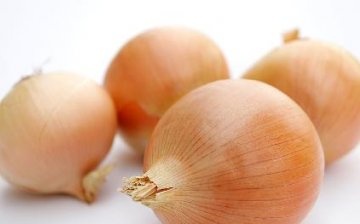
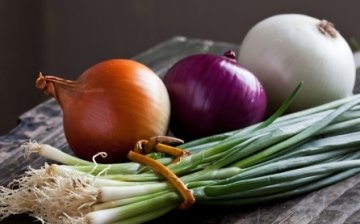
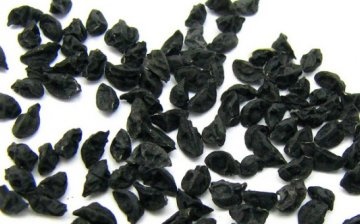
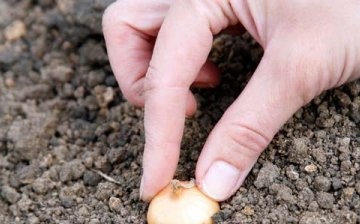
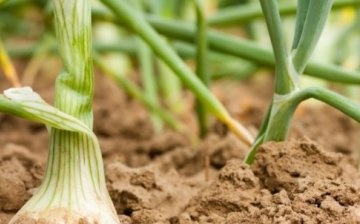
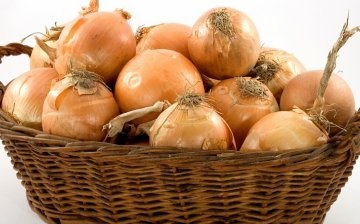






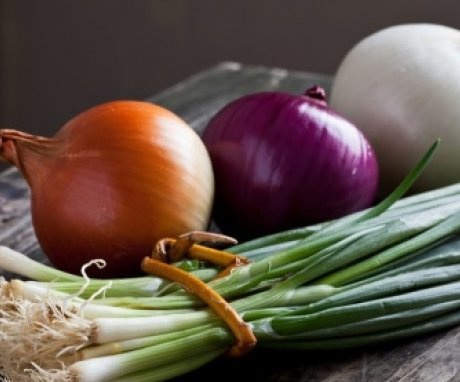
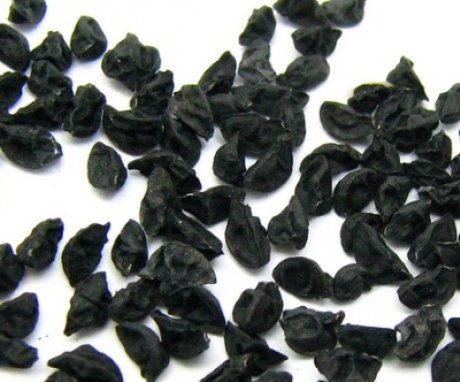


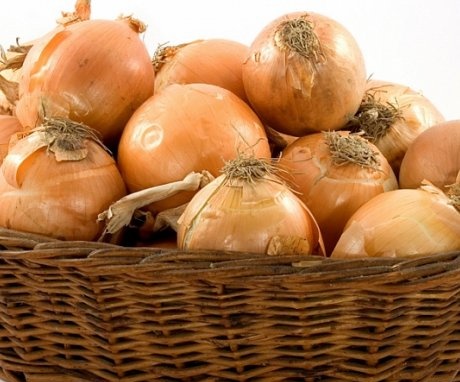
In our area, onions always grow small. After reading the article, now I understand why - this is happening. I violate technology in literally everything. I do not calibrate the seedling by size, I do not stand it for several days in the sun before planting. The distances in the garden and in the aisles are also small. Everything is from the desire to plant as many vegetables as possible in a small area, but you cannot fool nature. Next year I will adhere to the rules for growing onions and see what the harvest will be.
If the onions are not planted too often, watered well and applied organic fertilizers in a timely manner, then the bulbs will turn out to be quite large. But in the family we prefer medium-sized onions, we achieve this through the selection of varieties.